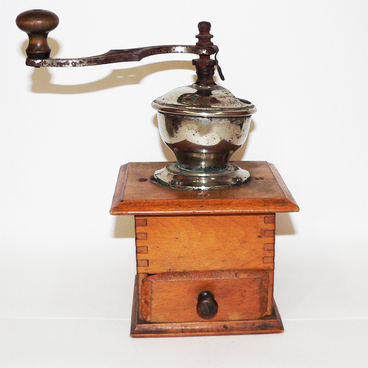In past centuries, villages used to store traditional and clarified butter in ceramic pots of various shapes and sizes. These pots were placed in a cellar or other cool place, and anything that was fetched from them was immediately eaten. Therefore, the butter dish was not so much a serving item as a vessel for storing a product.
Now all our homes are equipped with refrigerators, and the need for ceramic pots has long disappeared. But butter dishes can still be found in many kitchens - they are easy to use and brighten up the act of serving. Cookware manufacturers offer a wide variety of butter dishes made from ceramic, metal, glass, plastic and even wood - both minimalist and richly decorated. An important addition to the butter dish is the lid. Thanks to it, the butter does not absorb foreign odors and does not become dried out. The most convenient are flat butter dish plates of round or rectangular shape with a covering lid.
The ‘father’ of Russian porcelain was Dmitry Vinográdov, a classmate and friend of Mikhail Lomonosov. He was able to obtain the first porcelain of satisfactory quality at the end of 1746. At first, his manufactory produced small items - mainly snuff boxes for Empress Ekaterina Petróvna. Later, he pivoted to the production of larger items.
After the revolution, porcelain production managed to be resurrected. The so-called propaganda porcelain of the USSR of the 1930s is highly valued among collectors, since it has significant cultural and aesthetic value and is a reflection of the time in which it was created.
By the 1940s, a new direction of art was born — the Stalinist ‘Empire style’. Its characteristic features — a mixture of various design techniques, luxury, and pomp — were also adopted by porcelain products.
This green ceramic butter dish, presented in the exhibition ‘Kótlas from Ancient Times to 1946’, was made at a factory in the 1940s. The item, for storing and serving butter, has a cylindrical recess in the center and is decorated with floral designs along the body and edge of the stand.
Now all our homes are equipped with refrigerators, and the need for ceramic pots has long disappeared. But butter dishes can still be found in many kitchens - they are easy to use and brighten up the act of serving. Cookware manufacturers offer a wide variety of butter dishes made from ceramic, metal, glass, plastic and even wood - both minimalist and richly decorated. An important addition to the butter dish is the lid. Thanks to it, the butter does not absorb foreign odors and does not become dried out. The most convenient are flat butter dish plates of round or rectangular shape with a covering lid.
The ‘father’ of Russian porcelain was Dmitry Vinográdov, a classmate and friend of Mikhail Lomonosov. He was able to obtain the first porcelain of satisfactory quality at the end of 1746. At first, his manufactory produced small items - mainly snuff boxes for Empress Ekaterina Petróvna. Later, he pivoted to the production of larger items.
After the revolution, porcelain production managed to be resurrected. The so-called propaganda porcelain of the USSR of the 1930s is highly valued among collectors, since it has significant cultural and aesthetic value and is a reflection of the time in which it was created.
By the 1940s, a new direction of art was born — the Stalinist ‘Empire style’. Its characteristic features — a mixture of various design techniques, luxury, and pomp — were also adopted by porcelain products.
This green ceramic butter dish, presented in the exhibition ‘Kótlas from Ancient Times to 1946’, was made at a factory in the 1940s. The item, for storing and serving butter, has a cylindrical recess in the center and is decorated with floral designs along the body and edge of the stand.



